Welcome to the 2012–13 Annual Grants Report of The Ian Potter Foundation – our first online annual report.
The Ian Potter Foundation, established by Sir Ian Potter in 1964, is one of Australia’s leading philanthropic foundations. We endeavour to uphold Sir Ian’s legacy by supporting Australia’s most capable and forward-thinking organisations to bring about positive change and make a difference in the community. The Foundation makes grants nationally, supporting a wide range of projects across many sectors.
The Ian Potter Foundation funds in nine program areas: the Arts, Community Wellbeing, Education, Environment & Conservation, Health & Disability, Medical Research, Science, Travel, and Conference, as well as managing the Alec Prentice Sewell Gift.
Grant-making across all program areas is underpinned by the following six principles.
We support organisations, programs and individuals who are outstanding in their field.
To maximise the value of our grants, we try to identify and support projects that address the causes of any problems rather than treat the symptoms. Supporting research is fundamental to this approach.
We seek to fund programs and projects that take a new approach to solving problems, especially those that can be evaluated and have potential for expansion and further development.
Our grants have greater impact when combined with support from other sources. These might include other trusts and foundations, government, business or volunteers. We are happy to be one of a number of supporters of a program.
We try to fund projects that will continue to have an impact well beyond the period of our grant. The long term sustainability of the project is an important consideration.
We encourage collaborations and partnerships that facilitate combining knowledge and resources to achieve a shared goal.
Sir Ian
Potter
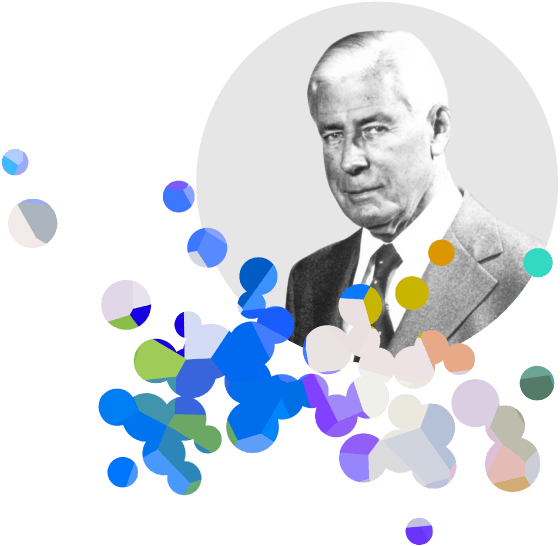
235
Grants
Total
value
$16.4
Million
$187
Million
As The Ian Potter Foundation approaches its fiftieth anniversary in 2014, we have been reflecting on the contribution the Foundation has made over the last five decades. Many factors have played a part in how effective we have been in making a real and lasting difference to society and our communities.
One of the most compelling factors is the impact that comes from supporting innovation – particularly innovation that is driven by people of intellect and ability, fuelled by passion, and in pursuit of a visionary idea. Although supporting innovation is not without risk, innovation lies at the heart of human progress and endeavour. As we are a philanthropic foundation, our opportunity to make a difference lies – at least in part – in identifying and backing innovators and innovations with the potential to bring about positive change where it is needed most.
As the encouragement of innovation is one of the Foundation’s six funding principles, there are many examples of such funding in our grants. Some grants over our history – such as funding the “blue sky” concept research for the Bionic Eye in 2007, and the ground-breaking Potter Farmland Plan which trialled sustainable land management practices back in the 1980s – are definitive, change-making projects that will have, or have had, far-reaching long-term impacts.
Other projects enable more subtle forms of innovation that are also of great value in bringing about positive change. These innovations may be a new approach to tackling an entrenched or hard-to-solve problem or identifying and tackling a new issue, and we consider these innovations to be of importance in the ongoing challenge of enabling and supporting positive social change.
Among the 189 grants approved this year, there are many excellent examples of smaller scale innovations such as the Hello Sunday Morning On Campus program, which uses online community building to tackle the issue of binge drinking among university students. There’s also our ongoing support for the Benalla Education Project, which takes a new, multi-faceted approach to addressing educational disadvantage in the community. It uses a long-term, whole-of-community plan that is bringing about a change in culture and attitudes and is starting to achieve the ambitious goals set when it was first devised in 2009.
As we approach our fiftieth year, we also acknowledge the importance of innovation in our own practice of philanthropy. One area in which this is especially evident is the increase in the speed and mode of communication and a growing awareness of the need to communicate the outcomes of our grants and the projects we support. To that end, in line with international best practice in the sector, the Foundation is currently completing the task of uploading all its grants to a publicly accessible, searchable Grants Database, which should be of assistance to grant-seekers who wish to better understand our funding priorities over time. Next year we will also start to explore formal, independent impact evaluation of some of our grants to better understand what works – and what doesn’t.
I would like to thank Janet Hirst and her staff for the leadership they have provided to the Foundation during the year.
Finally, during the year the Board of Governors formally welcomed two new members: Professor Richard Larkins AO and Mr Anthony Burgess. We thank them for joining the Board and look forward to their contributions over the years ahead.
Charles Goode AC
Chairman
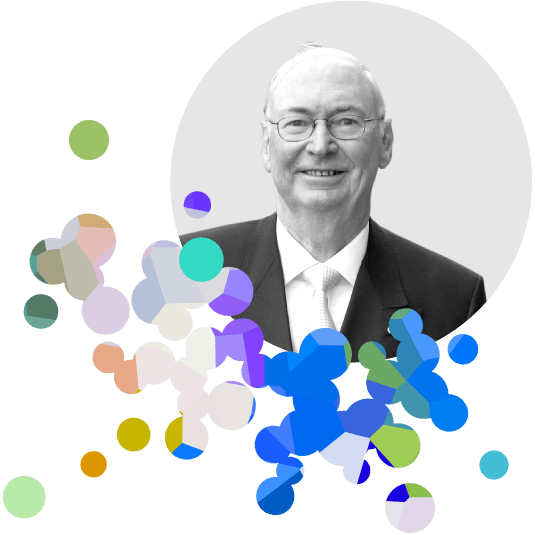
The 2012–13 financial year saw the Board of Governors of The Ian Potter Foundation approve the largest amount ever in new grants in a single year, with new project funding totalling $26.5 million to be distributed over the next five years.
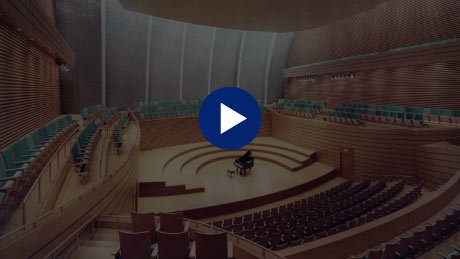
The Ian Potter Foundation CEO Janet Hirst takes us through some highlights of a year in philanthropy.
Your browser does not support this feature. Click here to view the video.
Two trends emerge strongly in the grants this year: the transformative effect of a large grant and the impact of a smaller grant invested in a great idea.
More than half of the value of this year’s grants – $15 million – will go to two major Arts projects at two of Australia’s leading universities. This highlights our firm belief in, and commitment to, investing in our tertiary institutions as centres of knowledge and excellence and their role in fostering Australia’s talent. It is well known that several of our leading universities are running major capital raising campaigns to help them meet future demands and opportunities. While the Foundation has been a long-term supporter of our universities, our contribution to these projects is also reflective of growing recognition in the community that governments can’t support everything – a fact that has been underscored by other major donations by individuals to universities in recent months.
While these large grants are obviously significant, in terms of numbers of grants our smaller grants account for the majority, and this is where much of our day-to-day effort is directed. The value and importance of smaller amounts – which can range from $2,000 to $250,000 – can have great impact and their value should never be underestimated.
Since it was established in 1964, The Ian Potter Foundation has placed the support of innovation at the centre of its approach to philanthropy. An article I read in the Harvard Business Review when I became CEO of the Foundation declared that philanthropy should be a leader of social change. I passionately believe this is true. Free from political restraints, philanthropy is able to take informed risks and test new ideas. As we approach our fiftieth anniversary in 2014, innovation and transformation will be key themes for us. Next year we will celebrate the contribution made in the first 50 years of the Foundation’s history and, perhaps more importantly, look to the future and consider the difference we wish to make in the years to come.
In the spirit of innovation, I also hope you enjoy this, our first, web-based Annual Grants Report. We hope it will bring more readers closer to the work we are doing and to the inspiring efforts of our grantees and the impact they are having in our community.
We were delighted to welcome four new members of staff to the Foundation during the year. Stewart Leslie, a former partner of KPMG, joined us in the role of Senior Accountant; Sally Cliff is our Finance Administrator; Tim Fisher joined our Communications team as Communications Officer, and Ngaire Jones is the new Program Officer.
Finally, I would like to acknowledge several staff members who left the Foundation during the year: Aoife O’Connell Whelan; Lee Anne Harris; and particularly our senior program manager, Caitriona Fay, who made a significant contribution to the Foundation’s work over six years.
I would like to extend my thanks to all the staff for their hard work and ongoing commitment to the Foundation, as well as their passion for making a difference.
Janet Hirst
Chief Executive Officer
189
Grants
$26.5
Million
Number of grants 31 Value of grants 16,712,200
Number of grants 43 Value of grants 3,167,800
Number of grants 2 Value of grants 163,194
Number of grants 16 Value of grants 1,965,000
Number of grants 8 Value of grants 1,469,500
Number of grants 19 Value of grants 2,024,000
Number of grants 7 Value of grants 550,000
Number of grants 5 Value of grants 139,550
Number of grants 37 Value of grants 77,969
Number of grants 21 Value of grants 168,495
The Ian Potter Foundation supports such a diverse range of projects across Australia that it is close to impossible to fully represent their breadth and scope.
We work with grantee organisations large and small to support and enable their valuable work with the shared aim of bringing about positive change and making a meaningful difference.
You can read here a handful of highlights from a busy and dynamic year that illustrate how excellence and innovation can take many forms.
This special project brought together two of the Foundation’s long-standing grantees. In 2012, the Foundation surpassed the milestone of $1 million in grants to Zoos Victoria – in a year that also marked Melbourne Zoo’s 150th anniversary.
As part of the Zoo’s celebrations, fifty models of the famous elephant calf Mali were decorated and displayed around the city. We awarded a grant to the Royal Botanic Gardens for the purchase and installation of the “Endangered Asia Mali” at The Ian Potter Foundation Children’s Garden for the enjoyment of visitors young and old. Painted by young artist Kelly Just, the gift is a wonderful way to continue our connection with the Ian Potter Children’s Garden.
The Children’s Garden will mark its own milestone next year when it reaches its tenth anniversary. The milestone will be marked by a much-anticipated expansion and improvement of this treasured community facility. As the Children’s Garden continues to grow in popularity, the redevelopment will ensure that it can continue to be enjoyed by the ever-increasing number of visitors.
As 2014 also marks the fiftieth anniversary of the Foundation itself, we’re delighted that our long-standing relationship with the Royal Botanic Gardens continues to grow in tandem.
Shared Celebrations

Children enjoying the arrival of Endangered Asia Mali at The Ian Potter Children’s Garden
Looking to the next generation of philanthropists, the Foundation supported the Foundation for Young Australians to host the first Nexus Australia Youth Summit.
This event is designed to educate and connect young wealth holders and social entrepreneurs, explore the benefits of investing in social impact, and promote innovative solutions to pressing social issues. Participants discuss and challenge each other to develop a vision for the future that is underpinned by risk-taking and creative solutions. Given the calibre and passion of the participants, we are sure the connections made at the summit are just the start of some big things ahead.
Next
Gen

Dr Aron Ping D’Souza, Coordinator of the Nexus Youth Summit
In 2007, Cynthia Banham, a foreign affairs and defence journalist for the Sydney Morning Herald, was critically injured in the Yogyakarta air disaster. Cynthia received burns to 60 per cent of her body and subsequently had both legs amputated.
Treated by world-leading burns specialist Dr Fiona Wood at the Royal Perth Hospital, Cynthia underwent extensive surgery and an arduous recovery process. Her survival and recovery are inspirational, and after many months of working with Cynthia and Dr Fiona Wood, we were thrilled to establish the Cynthia Banham Burn Injury Research Fellowship.
Each year, the program will give an early career researcher the opportunity to work and study under Dr Fiona Wood’s supervision at the Burns Injury Unit at Royal Perth Hospital.
As Cynthia says, “Having received emergency lifesaving treatment from Dr Fiona Wood and her team, I know first-hand the high level of expertise and talent we have in Australia in this most challenging field of medical practice. Even so, burn injury treatment remains a discipline in which much more knowledge is needed, particularly to improve the quality of life of survivors of severe burns trauma.”
World
leading
research
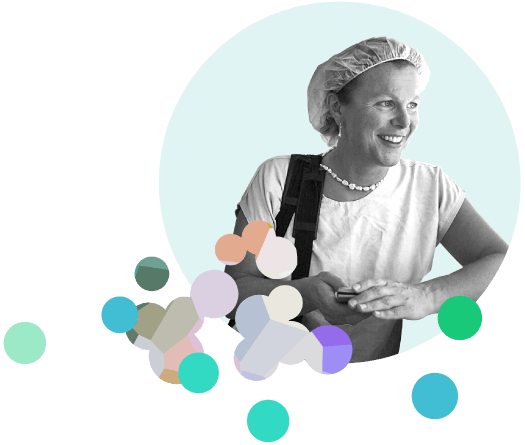
Leading burn expert, Dr Fiona Wood
In early 2012, the Foundation committed its equal-largest grant ever – $15 million – to the Victorian Comprehensive Cancer Centre. The grant was formally announced at a special donors’ event in August 2013.
Work has now begun on the VCCC facility, which will rank amongst the leading cancer facilities in the world and drive the next generation of cancer research and treatment in Australia. A key factor in the Foundation’s decision to support this project was the collaborative nature of the undertaking and the promise this holds for innovation and success. The alliance of eight leading institutions in the VCCC brings together the best people and ideas, and this superb building will provide the facilities and resources to turn research into treatment, and treatment into cures.
VCCC

Architect’s drawing of the building that will house the VCCC project in Parkville
This year we have continued to work closely with Brophy Family and Youth Services, who have received three grants over two years to support the Reality and Risk: Pornography, Young People and Sexuality project.
The project evolved from increasing concern that pornography has become the main sex educator for many young people, driven by increased accessibility to pornographic images and videos online. The project encourages young people, parents and educators to think critically about the messages conveyed in pornography.
The project’s documentary film, Love and Sex in an Age of Pornography, explores these issues through interviews with young Australians and porn industry representatives, including Larry Flynt. Following a special preview, which the Foundation co-hosted with the Andyinc Foundation at Nova Cinemas in Carlton, the documentary went to air on SBS2 nationally in July, generating significant publicity and helping to put this hot topic firmly on the agenda.
As Project Leader Maree Crabbe says, “Our education system is yet to catch up with the challenges many young people face as they explore sexual relationships that are informed by pornography.” The project’s education resource package is now in development.
Let’s
talk
about…

Still from the documentary film Love and Sex in an Age of Pornography
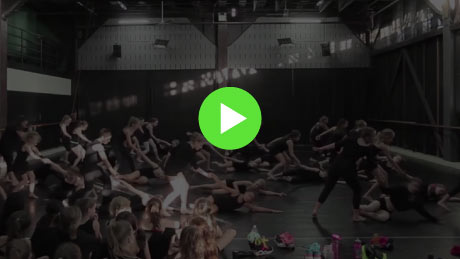
Program manager Claire Rimmer recaps the year in Arts funding, and we visit Sydney Dance Company to check in on one of the year’s exciting projects.
Your browser does not support this feature. Click here to view the video.
As a national funder, we were pleased to award grants in every state and territory this year, including those to Junction Arts Festival in Tasmania and Brown’s Mart theatre in the Northern Territory.
“The ripple effect” is often spoken about in relation to philanthropy, and it is something we put a lot of thought and effort into achieving with our Arts funding. We actively seek out projects that will have a sustained impact on the largest possible number of people or projects that offer long-term benefits.
Sydney Dance Company’s DanceEd program, which was supported with a grant of $90,000 over three years, exemplifies much of what our Arts program is trying to achieve.
Developed to educate students of all ages in contemporary dance, the program involves matinee performances for primary, secondary and tertiary students. Schools are given high-quality teaching resources, and students have the opportunity to ask questions about the work of the people involved in creating it. As well as its education benefits, DanceEd aims to develop future audiences and put Sydney Dance Company on a stronger footing. In line with the aims of this program area, the project supports the intrinsic value of the arts. As expressed by Rafael Bonachela, Artistic Director of Sydney Dance Company, “Everyone loves contemporary dance – they just don’t know it yet.”
Number of grants 31 Value of grants 16,712,200
See the complete list of Arts grants.
63.2%
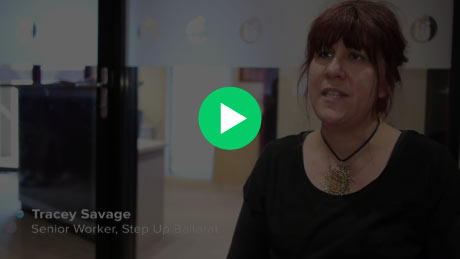
We speak with participants in an innovative trial project that’s addressing adolescent violence in regional centres, and program manager Alberto Furlan talks about social enterprise models.
Your browser does not support this feature. Click here to view the video.
The sustainability of the programs we fund is of central importance in effective grant-making, so it’s not surprising that more and more of our grants are being directed towards the growing social enterprise movement.
Currently, our investment in social enterprise extends from support for organisations that foster the social enterprise landscape itself to assistance in the development and implementation of promising models. The Foundation has supported the School for Social Entrepreneurs (SSE) since 2010. The school provides practical learning programs that enhance the effectiveness of our community’s social entrepreneurs and their ventures and has supported many successful endeavours. This year, we provided a grant of $100,000 for the program’s expansion to regional areas.
We’ve also been pleased to see projects that look to new methods to solve complex or embedded issues. Drinking habits are often formed during university years. To help counter the rise in excessive or binge drinking, Hello Sunday Morning On Campus uses online community-building to help students take a break from alcohol. The program is already active in universities across the country and has the potential to reach thousands of young people.
Another new project which aligns with the Foundation’s key priorities in the Community Wellbeing area is Step Up Victoria. This trial project aims to solve the difficult problem of adolescent violence toward family members. Courts and police can find themselves at a crossroads with violent teens as court orders risk forcing adolescents into homelessness and away from support. Modelled on a very successful American program, Step Up Victoria is a new approach to this complex issue and is run by Child and Family Services in Ballarat in collaboration with Berry Street and Peninsula Health in Frankston. While the program is in its early stages, collaboration between the two organisations and positive feedback from participants have been very encouraging.
Number of grants 43 Value of grants 3,167,800
See the complete list of Community Wellbeing grants.
12%
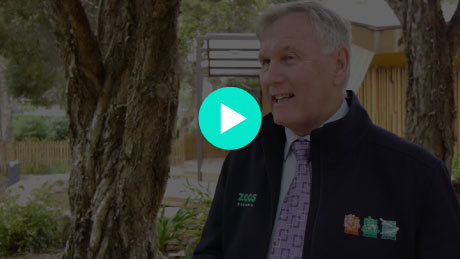
Our friends at Melbourne Zoo talk about the progress of the Growing Wild project and Program Manager Nicole McLeod introduces two new grantees.
Your browser does not support this feature. Click here to view the video.
Alec Prentice Sewell (1909–2003) bequeathed a large part of his estate to The Ian Potter Foundation with the wish that it be used for the “maintenance, education, welfare and benefit of needy children”.
In the decade since the bequest was made, the Foundation has honoured Sewell’s wish with grants that lay foundations for positive health, social and educational outcomes for children of many ages and circumstances.
This year saw the successful completion of the Growing Wild precinct at the Melbourne Zoo, which we supported in 2010 with $450,000 over three years. The facility provides a dedicated interactive learning and children’s space for children aged 3 to 8 years. The precinct is quickly becoming a favourite with young visitors who love the chance to get up close, nose to nose with meerkats, giant tortoises and quokkas. This is just one part of a program of major improvements at the Melbourne Zoo that will be taking place over the next few years, continuing its important role in conservation and education.
The two new grants awarded this year focussed on improving literacy outcomes among disadvantaged children. 100 Story Building received $135,000 for a writing centre in Melbourne’s west that encourages kids to engage with writing and literature through a range of programs. The second grant provided $28,000 for a children’s community book publishing project, Cockatoo Voices. It provides 60 disadvantaged children in the Cardinia Shire with the resources and encouragement to tell and publish their own stories.
As Mr Alec Prentice Sewell was an author and poet who published five books in his later life, we’re particularly pleased to fund these new programs which encourage an interest in literature while creating opportunities for personal development.
Number of grants 2 Value of grants 163,194
See the complete list of Alec Prentice Sewell Gift grants.
0.6%
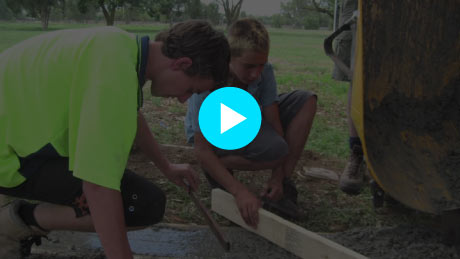
Program managers Alberto Furlan and Nicole McLeod discuss the key grants in our Education program area.
Your browser does not support this feature. Click here to view the video.
Sixteen new grants were awarded through the Education program, including renewed support of four existing programs. Education remains a challenging sector to fund for genuine impact and we continue to work with a range of partners and projects to find and support long-term success in this area.
In 2010 we were a founding partner in the ambitious Leading Learning in Education and Philanthropy (LLEAP) project of the Australian Council for Educational Research, and the Foundation’s CEO, Janet Hirst, remains on the project’s advisory committee. The project is now in its third year and is making an increasingly important contribution to building knowledge and improving the efficacy of collaboration between non-profits, schools and philanthropy.
We were very pleased to support the Murdoch Childrens Research Institute with a grant of $250,000 which enabled them to seek further funding from the Australian Research Council for a five-year trial project on how oral language can improve outcomes at school.
A great example of proven success in this area is Hands On Learning, an early intervention method that works with students likely to disengage from school. Established in 1999, the program takes young people out of normal classrooms for one day a week to give them practical skills within the school environment, whether working in the school garden, building benches or acquiring other practical skills. While the youth unemployment rate is around 10 per cent in Victoria, among Hands On Learning graduates it sits at 2 per cent, and we’re proud to assist with the program’s expansion into nine new schools.
Number of grants 16 Value of grants 1,965,000
See the complete list of Education grants.
7.4%

Foundation Governor Professor Tom Healy and program manager Claire Rimmer discuss the Foundation’s Environment program grants and look ahead to 2014.
Your browser does not support this feature. Click here to view the video.
As Professor Thomas Healy notes in the video you can watch here, there has been increased focus on the impact of climate change on our continent. We are receiving an increasing number of applications to assist with mitigating the effects of climate change on locations as diverse as the iconic Great Barrier Reef and the edge of the West Australian wheat belt.
Over the last 200 years more than 130 non-native animals have been allowed into Australia, contributing to the extinction of over 40 native animal species. Foxes, rabbits, goats, common mynas and other invaders amount to a pressing and complex problem.
The solution requires a determined effort, which the Foundation has supported through a range of grants in recent years. This year we have given a major grant of $1.2 million over four years to the Australian Wildlife Conservancy (AWC) to develop and implement their accountability and management framework which will help to maximise the ecological health of protected areas for a given level of investment. Managing 23 properties of 3 million hectares across the country, the AWC has had some remarkable successes, such as the eradication of feral cats from Faure Island in Shark Bay, Western Australia, so we anticipate some excellent outcomes from this project.
Also of note is the latest chapter in the Foundation’s long and successful relationship with the Royal Botanic Gardens, which was given a $5 million grant in 2007 for the Australian Garden in Cranbourne. Stage Two, which opened in October 2012, doubles the size of the Cranbourne gardens and, with the Ian Potter Lakeside Precinct, adds a valuable public event space. Located in Melbourne’s outer east, with around 1 million people living less than 20 minutes’ drive away, these internationally acclaimed gardens are home to over 100,000 plants, 1,000 species and significant remnant bushland and wetland. The world’s best showcase of Australia’s remarkable flora, the Australian Garden has not only received 17 significant awards but also explores what it means to be Australian, weaving historical, environmental and cultural influences through the space, and will provide an environmental legacy for generations to come.
Number of grants 8 Value of grants 1,469,500
See the complete list of Environment & Conservation grants.
5.6%
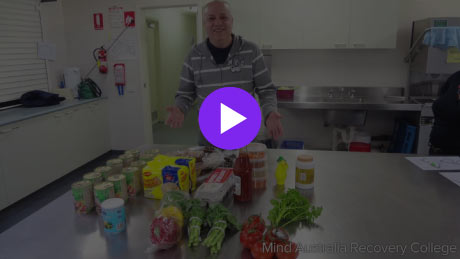
Program manager Alberto Furlan talks about the value of collaborative projects that are helping improve the health of Australians.
Your browser does not support this feature. Click here to view the video.
This program seeks to improve outcomes for people living with disability or illness and to promote good health for all Australians. It was pleasing to see a range of particularly high-calibre projects put forward this year, including several collaborative endeavours.
The most significant grant this year was a further $1 million over four years to the University of Melbourne for the National Indigenous Eye Health Program. This grant will help continue the great work done since 2008 in developing regional population-based eye care services in collaboration with the Aboriginal community-controlled sector, the eyecare sector, government, non-government organisations and mainstream health care providers. The Ian Potter Foundation’s chief executive officer, Janet Hirst, is a Member of the Indigenous Eye Health Programme Advisory Committee.
These services will ensure the full implementation of the 42 recommendations contained in the Roadmap to Close the Gap for Vision. The project also tackles the social side of the issue by involving communities through on-the-ground work, and the Foundation itself continues to be closely involved in the program – with our CEO, Janet Hirst, sitting on the project steering committee.
Other particularly noteworthy projects include the InsightOut mobile education centre for the blind; and Mind Australia’s Recovery College program, which seeks to empower people seeking not only pathways out of mental health problems to take charge of their lives but also education through a community college model.
Number of grants 19 Value of grants 2,024,000
See the complete list of Health & Disability grants.
7.7%
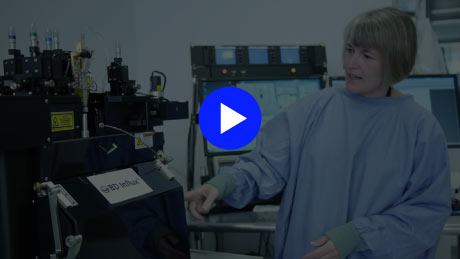
Associate Professor Louise Purton of St Vincent’s Medical Research Institute offers an insight into some of Australia’s best practice in medical research.
Your browser does not support this feature. Click here to view the video.
In the decades since The Ian Potter Foundation was established in 1964, we have granted more than $40 million to Australia’s leading medical research institutes. It has been an ongoing priority for us to help this vital sector to maintain a place among the world leaders to ensure that Australians benefit from the best possible research, knowledge, treatments and prevention.
Among the key Medical Research grants made this year, $250,000 went to the Integrated Clinical Research facility at St Vincent’s Medical Research Institute. This grant will assist the purchase of a vital piece of equipment for the new Integrated Clinical Research facility, which will bring together world-class clinicians with world-class medical researchers to tackle critical diseases such as type 1 diabetes, cancer, heart diseases and hepatitis C.
Last year’s McKeon Strategic Review of Health and Medical Research pointed out that there is insufficient connection between medical research and health in Australia. By housing the centre within St Vincent’s Hospital, this facility aims to foster such collaboration and translate research into applied health programs and solutions.
Over the years we have seen the many benefits brought by collaborations between researchers and institutions with shared goals and complementary assets in terms of research and facilities. Coming through in the applications this year were higher numbers of collaborative projects which we are confident will deliver multiple advances in terms of outcomes and community benefit in the longer term.
Number of grants 7 Value of grants 550,000
See the complete list of Medical Research grants.
2.1%
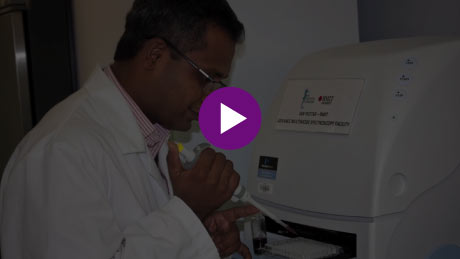
Program Manager Nicole McLeod and Governor, Prof. Tom Healy, discuss the Foundation’s investment in some exceptional science projects.
Your browser does not support this feature. Click here to view the video.
Support for exceptional scientists continues to be a central focus of this program area.
One of this year’s grantee’s, Dr Vipul Bansal – an RMIT scientist and one of the few Australians to receive a Gates Foundation start-up grant – is involved with cutting-edge nano-biotechnology research. With the Foundation’s assistance, RMIT has acquired equipment that will assist with Dr Bansal’s study into changes in the gene profile of organisms upon exposure to nanomaterials. This research is of vital importance to the formulation of regulatory measures to help control exposure to cytotoxicity.
In 2010, the Foundation made a grant of $750,000 over three years towards the development of a PlantBank facility at the Australian Botanic Garden at Mount Annan, New South Wales. Considered a vital investment in the conservation of Australia’s biodiversity, this world-class facility for plant research is home to the largest native seed bank in the Asia Pacific region. You can read the case study here.
The Foundation is also proud to continue its long commitment to preserving and protecting an iconic part of Australia, the Great Barrier Reef. Ongoing fellowships at Lizard Island Research Centre through the Lizard Island Reef Research Foundation and two new grants awarded this year to early career researchers at the Australian Research Council Centre of Excellence for Coral Reef Studies, based at James Cook University, will assist far-sighted and effective work into many aspects of the reef.
Two other highly valuable fellowship programs also received continued support. The Ian Potter Policy Fellowship with the Wentworth Group of Concerned Scientists and The Ian Potter Biodiversity Fellowship with Museum Victoria are both considered important investments in key areas of Australia’s long-term environmental sustainability and conservation.
Number of grants 5 Value of grants 139,550
See the complete list of Science grants.
0.5%
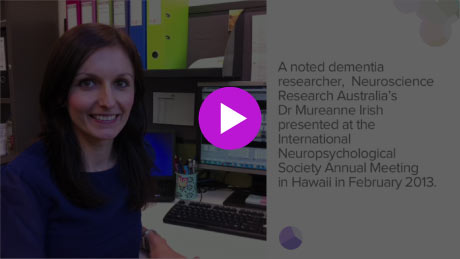
Travel grantees share some moments from their international conference experiences.
Your browser does not support this feature. Click here to view the video.
Since the Foundation’s inception in 1964, over 2,400 talented people have benefited from this quietly influential program, which enables early-career academics and researchers to present their work at international conferences. These opportunities bring a range of flow-on effects for their careers and their work.
Thirty-seven Australians benefited from the Travel program this year, presenting at conferences in England, Canada, Italy, Ireland, New Zealand, Spain, USA, Brazil, Denmark, Peru and France.
Two examples of the depth and breadth of the research funded through the program can be found in the work of Drs Clare Sullivan and Muireann Irish.
As a noted dementia researcher, Dr Irish presented at the International Neuropsychological Society Annual Meeting in Hawaii in February 2013. She outlined how patients with semantic dementia, who show a loss of world knowledge but relatively preserved recent memory of their past, have displayed striking impairments in imagining future events. For her work on episodic memory and future thinking in dementia, Dr Irish was awarded an INS Young Investigator Award for an outstanding presentation and the Laird Cermak prize for outstanding research in memory.
In June 2013, Dr Sullivan attended the Privacy Law Scholars Conference, California. The only Australian to be invited, Dr Sullivan presented a paper examining the Consumer Privacy Bill of Rights proposed by the Obama administration as a “blueprint for privacy in the information age”.
In comparing proposed privacy changes in the United States and Australia, Dr Sullivan wrote that widespread use of cloud computing makes regulation of cross-border data one of the most significant issues now facing regulators around the world.
Number of grants 37 Value of grants 77,969
See the complete list of Travel grants.
0.3%
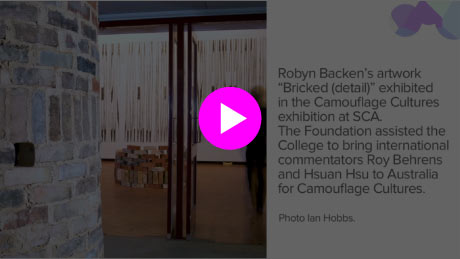
Conference grants help bring expertise and new perspectives to appreciative audiences.
Your browser does not support this feature. Click here to view the video.
Conference grants are a great example of how relatively small grants can have a significant impact. This program helps to bring keynote speakers of international renown to Australia, exemplifying ripple-effect philanthropy as knowledge and expertise are shared, new ideas sparked and connections made.
Funding is provided across diverse subject areas and this year was no exception, with projects ranging from an international symposium on agamid (dragon) lizards to an international arts event on camouflage and an important conference on suicide prevention.
There are 300 species of agamid lizards in Africa, Asia and Australia and a few in Southern Europe. Many species are commonly called dragons or dragon lizards. The DeAgamis3: International Symposium on Agami Lizards was held at Museum Victoria, Melbourne, during 21–23 January 2013. Our grant went towards bringing expert keynote speakers in agamid research, genetics, evolution and relationships across the species. As the first agamid genome is currently being sequenced in a joint project at the University of Canberra, January 2013 was considered an opportune time to hold the symposium in Australia, where these lizards comprise a key component of vertebrate biodiversity in arid and tropical regions.
At Sydney College of the Arts, international commentators Roy Behrens and Hsuan Hsu brought considerable weight to the Camouflage Cultures conference and exhibition. Behrens is a world-leading authority on camouflage in art, nature and war, while Hsuan Hsu is recognised as a leading scholar on the subject of social mimicry.
Also in Sydney, we helped bring three keynote speakers to the Annual National Suicide Prevention Conference in October 2012. Given the prevalence of suicide across all ages, most Australians are likely to have some experience of this tragic situation regardless of their background. That makes suicide prevention a particularly pressing and emotive topic. The conference focused on collaboration in the area of prevention, bringing experts Dr Thomas Joiner, Dr Jerry Reed and Professor Stephen Platt to provide fresh perspectives and valuable frameworks for collaborative action with Australian professionals in this important and complex area.
Number of grants 21 Value of grants 168,495
See the complete list of Conference grants.
0.6%
In 2014 the Foundation will reach the significant milestone of its fiftieth anniversary. This presents a special opportunity to celebrate and reflect on the contribution our grants have made to Australian society since 1964. It is also a chance to look to the future and consider the next 50 years, and to shape a platform for our ongoing work and define the Foundation’s legacy for the decades ahead.
We look forward to celebrating with many of our grantees, friends and associates across Australia over the year ahead at a range of events and occasions. The journey back in time to the Foundation’s beginnings – and the progress from our first grant of $30,000 to the Howard Florey Institute in 1964 to the increasingly strategic philanthropy of today – is paved with successes, and some failures, and much learned about the most effective ways to give. (It’s not as easy as it sounds!) Over the coming year we will share these stories and lessons via video and in print. Please follow us on social media via Facebook or Twitter to keep in touch with our plans. We hope that sharing The Ian Potter Foundation’s story will inspire thought, spark conversations and help inform the next generation of Australian philanthropy.

Lady Potter AC
Mr Charles B Goode AC (Chairman)
Professor Geoffrey Blainey AC
Mr Anthony Burgess
Mr Leon Davis AO
Sir Daryl Dawson AC, KBE, CB
The Hon. Sir James Gobbo AC CVO QC
Professor Thomas Healy AO
Dr Thomas Hurley AO OBE
Professor Richard Larkins AO
Mr Allan Myers AO QC
Dr P John Rose AO
Professor Graeme Ryan AC
Chief Executive Officer: Janet Hirst
Senior Program Manager: Alberto Furlan
Program Manager: Claire Rimmer
Program Manager: Nicole McLeod
Program Officer: Ngaire Jones
Communications Manager: Avalee Weir
Communications Officer: Tim Fisher
Administration Manager: Gail Lewry
Administration Assistant: Sue Wilkinson
Reception and Personal Assistant to the CEO: Sarah MacNeill
Senior Accountant: Stewart Leslie
Finance Administrator: Sally Cliff
Senior Program Manager: Caitriona Fay (until Jan 2013)
LeeAnne Harris: Finance Manager (until Oct 2013)
Aoife O'Connell Whelan: Communications Coordinator (until Jan 2013)
The Ian Potter Foundation
Level 3, 111 Collins Street, Melbourne VIC 3000 Australia
www.ianpotter.org.au
T (+613) 9650 3188 F (+613) 9650 7986 E
Project manager: Avalee Weir
Content: Avalee Weir, Tim Fisher
Web Design: Magnetic Design
Video production: Alex Parker